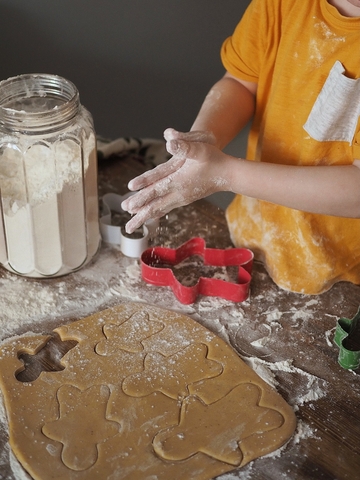Encouraging Children to do Maths in their Everyday Lives

The pressures on children over the last year has made it difficult to keep their attention on their learning. Javier Arroyo, Co-founder of Smartick, the innovative maths program designed closely with experts in education, explains the best ways to keep children engaged with maths in their everyday lives.
The last year has been extremely disruptive to school life and the strain has been felt by many. As a result, children may have felt that learning has become a chore, resulting in feelings of disengagement and uninterest.
For some children who have not been able to attend school during lockdown restrictions there can be quite a big learning loss – especially when parents are under pressure to not only home school but continue to work from home themselves and manage the household.
However, learning should be fun, challenging and rewarding – but without being overwhelming and there are some really easy ways to do this. Encouraging children to do a little each day, with a strong focus, is much better than getting them to sit down once a week for hours on end without their full attention.
Rather than add further pressure to children, it’s important that we avoid the notion that children should “catch up”. Instead, learning must be made enjoyable and engaging again. Our education experts have found that, gamification, or put simply, turning learning activities into games can be a great way to keep children interested. Maths seeps into most aspects of our lives whether we realise it or not and introducing children to these interactive activities can bring the subject to life.
Counting Coins
Although it’s becoming rarer to have coins lying around the home, it’s likely that we all have some coppers we’ve been meaning to use. Rather than letting spare coins gather dust, they can be used to help children visualise money and help improve their addition, subtraction and multiplication skills. Asking them questions such as, “show me 20p in as few coins as possible”, or “show me what I’d have left if I paid with £1 for a chocolate bar that cost 65p” can be a great way to introduce them to basic sums.
The difficulty of the questions can be varied depending on the ability of the child and how quickly they improve their money skills. Introducing more complex multiplication and division sums can begin teaching them vital skills like splitting bills which they are likely to use as they get older. More than anything, familiarising a child with physical coins has the added bonus of teaching them the value of money in an increasingly digital world. By engaging them with simple money counting games, they can begin to see how much things are worth while improving their basic maths skills.
Helping with the shopping
One aspect of maths which plays a crucial role in our adult lives is budgeting. Everything from working out the price of a food shop, through to organising standing orders and direct debits from the bank – having a basic understanding of addition, subtraction and estimation is vital to everyday life. To give children a taste of this, they can be encouraged to estimate how much the items in the basket will cost when they go shopping with a parent or guardian.
Encouraging them to round to the nearest pound can help make the task slightly easier for younger children and help them to keep track of the items being purchased.
The simple game allows children to use their mental maths skills along with helping them to estimate the price of a shop, both of which will come in handy as they become more independent.
Cooking and Baking
Getting children involved with cooking and baking can be a great way to show them how maths is used every day. It teaches them a lifelong skill whilst showing that maths can be used for fun activities.
It’s fair to say that many children love cakes and sweet treats, and baking is a failsafe activity for keeping kids occupied on rainy days. Start off by making something simple like a smoothie where it’s relatively straight-forward for children to count the number of ingredients needed. Make sure to supervise the children as they carefully pick out the fruit and add it to the blender. If you’ve prepared yourself for the inevitable mess, baking can also act as a great way to teach children the basics of measurements and ratios.
It’s common to use half or double of recipes to accommodate different numbers of people. This offers a fantastic opportunity to test children’s maths skills. For example, ask them questions such as “if you’re making a recipe intended for two which requires 500ml of milk, how much would you need if you were to make the recipe for 6 people?”
Alternately, “if you’re making a meal for just one person but the recipe has ingredients for two, how much would you need for your recipe?”
The beauty of cooking and baking is that the questions you ask can be easily adapted depending on the ability or age of the child, and it’s a skill that we use all the time.
Counting games
Keeping children entertained on long car journeys can be difficult, but simple counting games can improve their maths skills and keep them occupied. At the start of a long journey, give children a list of things you’d like them to look out for and ask them to count how many they see during the journey.
You could even take it a step further for more advanced learners and give them a checklist to make a tally of things they see, for example police cars, buses and bridges. This game is only limited by your imagination and can help children learn how to create simple tally charts while improving their counting skills.
To make it even more interesting you could even give objects different values to add another element to the game, for example, a fire engine is worth 5 points, but if you see an ambulance it is minus 10 points.
The rules can be as ambitious or as basic as you like, but the fundamental mechanics of the game helps to keep children engaged with their surroundings, tests their reactions and also improve their addition and subtraction skills.
Hide and Seek
One of the most common and universally loved games for children is hide and seek. The rules of the game are self-explanatory, which may pose the question, how do you integrate maths into the activity?
The game is split into hiders and seekers, and the usual rules require seekers to cover their eyes and count to a certain number while the hiders find a somewhere to hide. The game can be easily altered to include maths by asking the seekers to count up through their times tables, instead of simply counting. This can be tailored to each child dependent on their ability, for example younger children can start off on their two- or three-times tables, whereas more advanced learners could try and tackle their 12- or 13-times tables if they’re feeling confident.
This can also offer the added incentive that the quicker they finish the times tables, the quicker they are able to go and find their friends…
Helping Hand
The pandemic has seen a rise in the number of people tackling DIY projects while we’ve been confined to our homes. DIY often requires basic maths skills including drawing up plans and measuring surfaces. Under close adult supervision, children can help to do the basic sums that make projects possible. For example, if you’re retiling your bathroom, you will need to work out the area of the space being renovated. This is a perfect time to get children involved as it doesn’t require the use of any dangerous tools, but it also allows them to feel engaged and involved.
You can involve children as little or as much at this point, either by giving them the measurements or allowing them to use the tape measure and showing them how to work it out themselves. This will differ dependent on the age and capabilities of the child. Once the measurements have been worked out, encourage children to divide the space into simple shapes, labelling each side with the measurements you have. Once a rough sketch is mapped out, children can be tested on how to work out the area and the perimeter of a space. Getting kids involved at this early stage, shows them that maths is essential for everyday life, and also helps them feel as if they are actively participating. Just make sure to double check their calculations before you reach for the drill!
Playing Music
There are numerous studies that explore the positive effects of music on the brain. One study discusses the so-called Mozart-Effect which suggests that people who listened to Mozart for 10 minutes showed significantly better spatial reasoning skills than when they listened to other forms of relaxing music.[1] There is still a lot of uncertainty on exactly how music effects brain function, but one thing is clear is that learning an instrument and music in general is fundamentally based around maths. Time signatures that tell us how music is counted are essentially basic fractions, for example 4/4 simply means there are 4 beats in a bar, or 3/4 means there are 3 beats in a bar.
To show how this works to children, count along with them to music they like. The chances are, most popular songs will be in either 4/4 or 3/4, so counting along to the beat to work out what time signature the song is in can be a fun exercise. If a child is learning to play an instrument, they’ll quickly put their counting and timing skills to the test and will likely see an improvement in their overall understanding of maths.
Tablet time
There is often a lot of guilt associated with giving children tablets or phones to keep them occupied. It can feel like the easy way out, and children are often so engrossed that it can feel like it’s having a damaging effect on them. If controlled, and given to them in short intervals, there is no reason why tablet time can’t be positive. Rather than letting them browse YouTube or mindlessly play games, there are now learning platforms that exist to help them keep on top of maths. Shorter but regular exposure to e-learning platforms can help children to stay engaged with maths without feeling like they are being overwhelmed. There is no reason technology can’t be used to assist learning, and if used in harmony with schooling and everyday maths lessons, it can help to form a fuller picture of the world for children.
Keeping children engaged with maths is simply about integrating it into their lives so it doesn’t feel like a chore. Children will often switch-off if they don’t feel captivated by an activity, so it’s important to understand the individual and adapt to what they enjoy.
Maths appears in many aspects of our lives and its easy to underestimate how much we use it, even for some of the simplest tasks. Showing children the everyday application of maths brings the subject to life, keeping them interested and involved during a time where learning has been placed under immense pressure. More than anything, it makes learning fun again and allows children to be children.











Responses